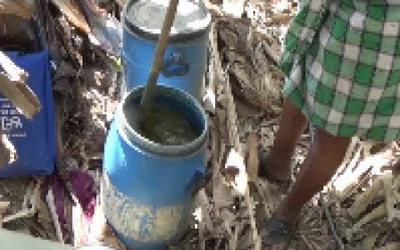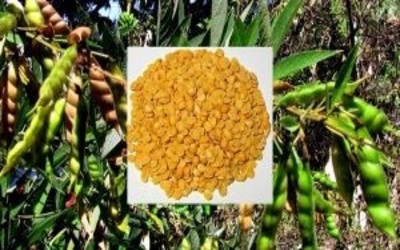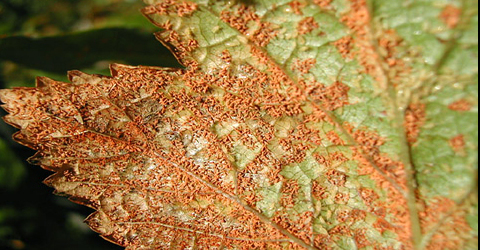
Brahmastra – Against missile-sucking insects
Brahmastra is a very powerful missile against large insects such as borer, fruit borer and pod borer.
This liquid mixture can be made by farmers easily at home.

Materials Required for Brahmastra:
1. Cow urine
2. Neem leaves are crushed (with a thin stem) or neem seeds powder 100 grams per acre of cow urine
3. Karanj leaves crushed 100 grams of cow urine per liter
4. Custard apple leaves crushed 100 grams per liter cow urine
5. Castor leaves crushed 100 grams of cow urine per liter
6. Dhatura leaves crushed 100 grams per liter cow urine
Preparation method:
Step 1:
Mix all the ingredients in a pottery vessel. Use a wooden stick to mix the ingredients mixture. Wooden stick rotating in the mixture according to the clock wise, so that positive energy spreads in the mixture.
Step 2:
Boil the mixture on the fire and boil it.
Step 3:
Cover the tank with a jute sack or poly net. The tank should be in shadow and it should be noted that the tank is not directly exposed to sunlight or rain water. Leave the mixture for fermentation for 48 hours.
Step 4:
Twice in a day for 1 minute, keep the mixture rotating according to the clock wise by a wooden stick.
Step 5:
Filter the Brahmastra after 48 hours, and keep the mixture in the bottle and keep it safe.
Preparation time:
48 hours
Storage :
6 months.
Use:
Sprinkle the mixture on infected plants or mix 3% Brahmastra with water and sprinkle it with a foliar -spray. If the nuisance is high, then you can use a mixture of 4%. For 1 acre farm, mix 6 to 8 litres of Brahmastra mixture with 200 litres of water and sprinkle on the plants.
Pay attention:
1. Using sil-over, crush the neem leaves and other plants leaves. 2. Use only cow urine of indigenous cows.














